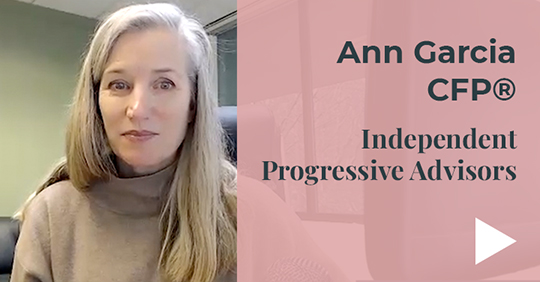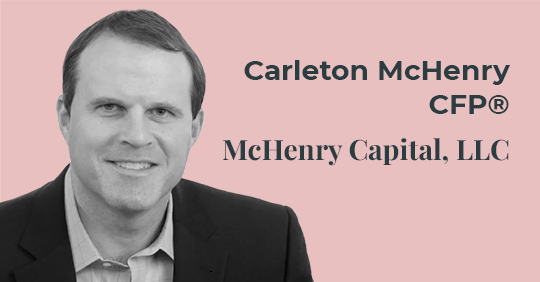
Joe Messinger, CFP®, ChFC®, CLU®, is the co-founder of College Aid Pro™ — a tech company that developed the MyCAP platform, which allows families not working with a college-planning professional to plan for, and save on, the cost of college, as well as seek on-time guidance from a college planning expert. We’re happy to be sharing education and perspectives from CollegeAidPro.com to help families navigate paying for college.
With a background in financial planning, Joe outlines different ways families can minimize debt associated with college costs.
Consider this:
The Oxford Dictionary defines “paradox” in part as “a statement or proposition that, despite sound (or apparently sound) reasoning from acceptable premises, leads to a conclusion that seems senseless, logically unacceptable, or self-contradictory.”
To qualify for need-based financial aid, students obviously must demonstrate “need.”
However, the reality is that parents are in their peak earning years when their kids are heading off to college. The timing is all wrong. When families need financial aid at the time of sending their kids off to college, they don’t really “need” the money in the eyes of those awarding aid.
Think back to when you first had kids
Wouldn’t it be nice if we could determine financial aid need when we were just having babies? Parents in their mid-20s have higher debt, perhaps paying off their own college loans. They are just starting out in their careers with lower salaries, and higher child care costs. Parents are just trying to survive, probably living paycheck to paycheck. If we could calculate their “need” then, they’d probably qualify for financial aid.
But it doesn’t work that way.
Now jump forward in time, and any debt parents carried is mostly gone. Salaries are higher. They have saved more for retirement and college (hopefully). When calculating the student aid index, all the following are included in the formula for parents and students:
- Taxable income
- Cash, savings, and checking account balances
- Net-worth of investments (Does not include retirement accounts, but does include money saved for college.)
These figures are probably at the highest they have been now that parents have reached their mid-40s. Now is not the most favorable time to be calculating financial need.
What can you do?
Hoping for scholarships is not a strategy. You need to have a detailed plan that minimizes student loans. Planning for how to pay for college needs as much attention, if not more, than planning for how to pay for retirement. Your employer is probably helping you save and pay for retirement with a 401(k), including a company match, and, in some cases, a pension.
The runway to save and eventually pay for college is short, and the start date cannot be delayed as your retirement can. Once college starts, you are going to get a bill whether you like it or not. Often, this bill is taken care of by the student – but parents may still be on the hook for assisting their kids or for cosigning student loans. Luckily, there are several things you can do to get ahead of the game.
Talk to your student
Have the money conversation with your student so you both have a clear plan for what you can afford, and how you will get there. Understanding what you can feasibly afford to contribute, and what your students will need to cover through their own savings, work during school, or student loans, can help you set a family budget that minimizes debt and maximizes your student’s college return on investment. Being candid with your student about what funds are available to them can help to limit their focus during application season, and when weighing their options.
Think about financial aid
Understand which schools will offer you tuition discounts regardless of your financial need. This may mean looking at schools that have lower tuition for state residents, or alumni scholarship opportunities. Sometimes smaller schools in your state offer better scholarships or discounts than the “big name” state or private schools, as well. Be prepared to look around for the best program at the best price.
Create a plan to pay
Pay attention to cash flow, and include that in a pay-as-you-go strategy. Every college offers a different form of a pay-as-you-go program. Leveraging the current funds you use to pay for your kids at home to drive down their monthly college tuition expenses can help to lower the amount of total debt they take on.
Look for student employment opportunities
Encourage students to help in whatever way they can to minimize student loans. Teens who can contribute $2,500 per year by working could save $10,000 in four years. They can also become responsible for getting a part-time job during school to cover their living expenses, or to pay for books and supplies out of pocket. Although these costs may seem minimal in comparison to their larger tuition bill, every dollar counts!
Leverage student loans wisely
Use student loans wisely! Find a trusted resource to provide you with sound guidance. Working with a fiduciary financial planning team can help you to identify how to minimize your future grad’s debt, and ways to borrow wisely when it’s needed.
Know before you go
One of the biggest roadblocks that families face is understanding what the true cost of college is. It’s impossible to plan without understanding what the final bill will look like! Take time to estimate the actual price of attendance at your top colleges and universities prior to applying.
Understanding next steps
In the end, you can fulfill your needs even though you don’t appear (in the eyes of financial aid) to have any. With careful planning, your child can graduate with minimal student loan debt without robbing your retirement.











